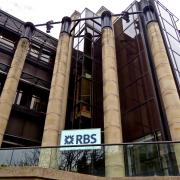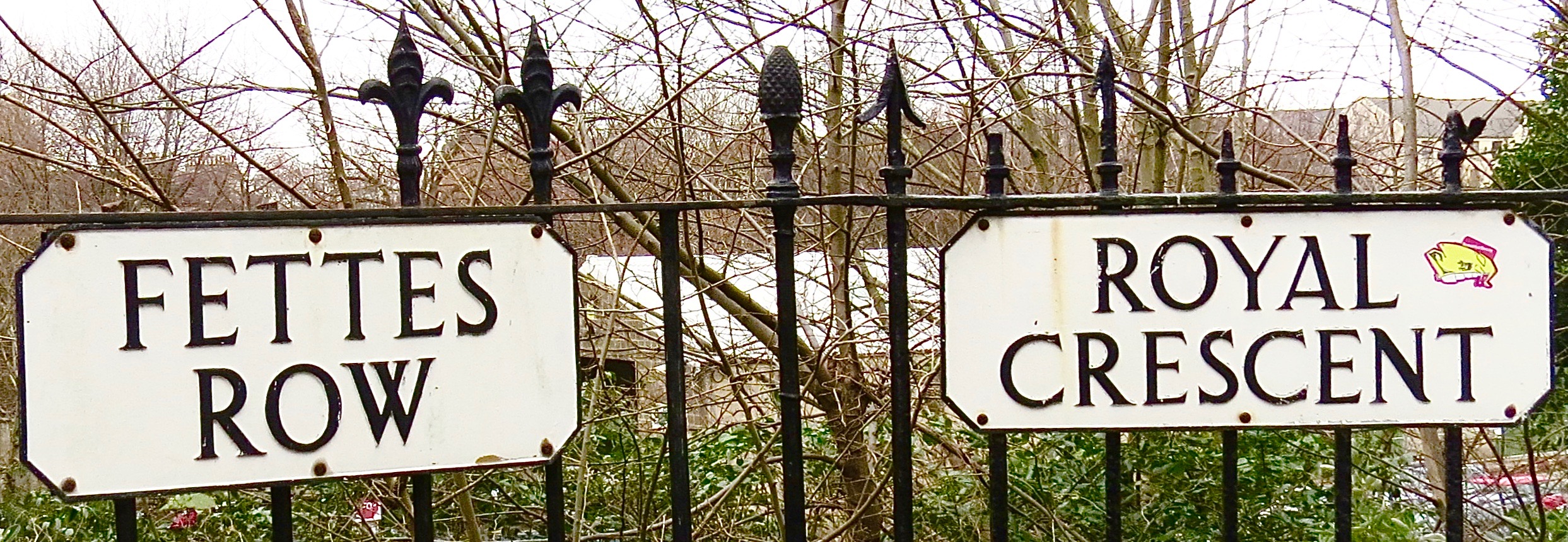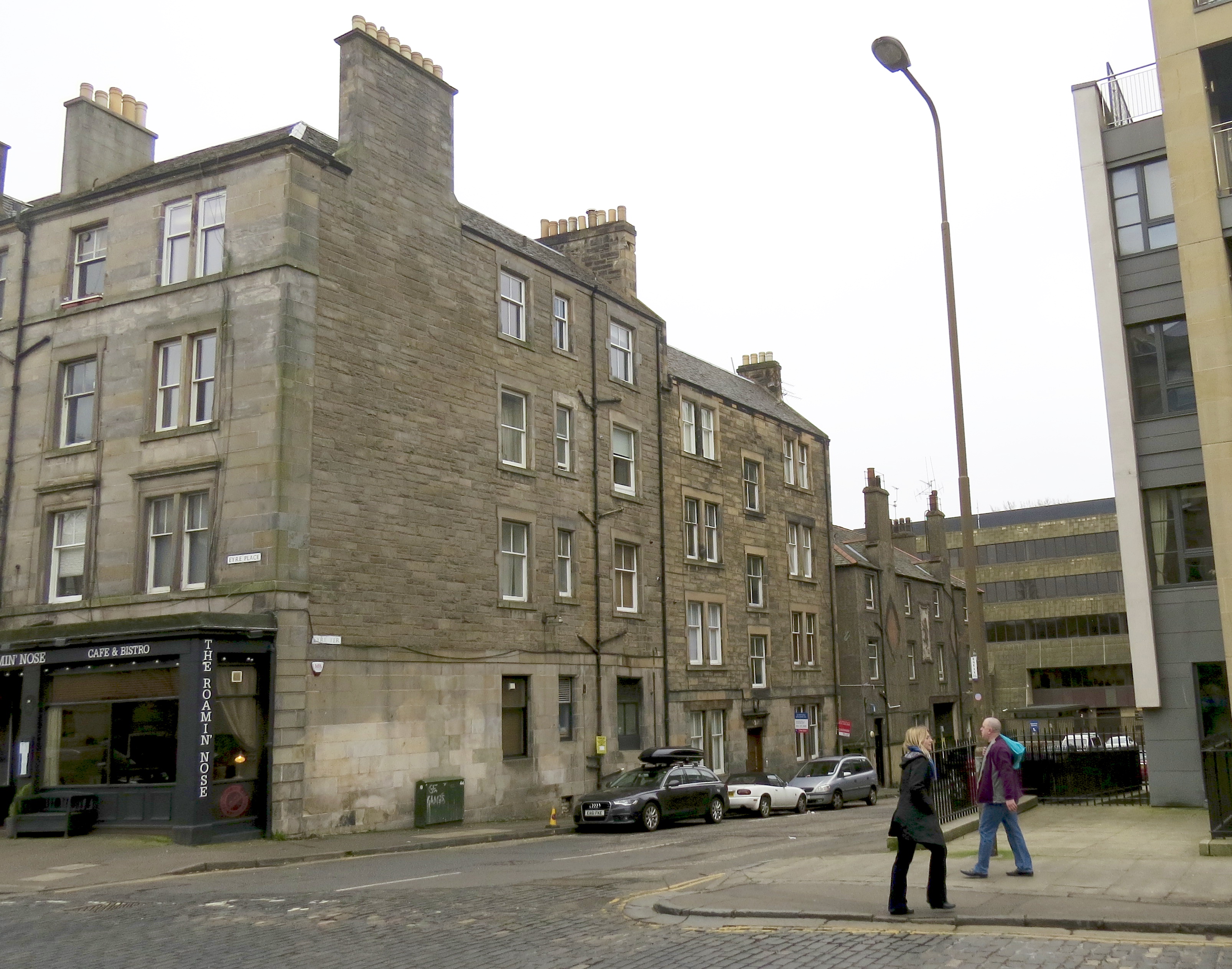
Royal Bank of Scotland has finally submitted its proposals for planning permission in principle at 34 Fettes Row, and 7, 11, 13 Eyre Terrace.
As predicted (Issue 250), many aspects of this will be familiar to those who have followed earlier stages of public consultation, but we revisit them here partly as a first stab at finding a route through the 59 documents submitted in support of the application.
You can see all the details here: Ref. 16/05454/PPP.
The Design and Access Statement – divided into 4 files (1, 2, 3, 4) – gives the clearest visual representations of roughly what goes where, but beware of anything that suggests how a building might appear. These artist-impressions (‘Indicative 3-D views’) and scrapbook images are fantasies not concrete proposals at this stage.
As is normal in such cases, this proposal is RBS’s effort to gain as much leeway as possible so that the site is more attractive to a future developer and the land will fetch a better price when RBS comes to sell it. It is a template only.
Any detail about design or materials will be discussed at a later planning application stage (Approval of Matters Specified in Conditions [AMSC]). Hence, the current, aspirational vagueness of statements in the proposal such as, ‘The new buildings would be required to respond to and enhance the surrounding built environment’.

An overall view
The proposal is for demolition of 7 structures (see Part 1 of the Planning Statement, 8.24–8.45), none of which is considered worth retaining.
The main thrust is then to achieve residential-led redevelopment comprising ‘Residential; Retail (Class1); Financial, professional & other services (Class 2); Food & drink (Class 3); Business (Class 4); Hotel/Class 7; Care Home (Class 8); car parking, access & other associated works; detailed approving of the siting & maximum height of blocks; landscaping strategy: location of principal pedestrian/cycle routes and points of pedestrian & vehicular access/egress’.
- Two blocks are proposed to ‘complete’ the existing blocks adjacent to Eyre Terrace.
- An Eyre Place perimeter block would front King George V Park, set back behind the current tree line.
- Eight ‘pavilion buildings’ in a ‘landscaped, parkland setting’ would look out onto Fettes Row and Royal Crescent, with an elevated footway/cyclepath in front of them connecting Dundas Street to the Scotland Street end of King George V Park.
- East–West pedestrian route through the site, linking Dundas Street to King George V Park via linked public and green spaces.
What kind of uses?
In Section 4.2 of the Planning Statement Part 1, there appears a quantum of development schedule which breaks down the maximum proposed floor space (gross sq.m) uses as follows:

These floorspaces represent the maximum in each use category. The overall total floorspace would be 47,450 sq.m – less than the total shown above – with the mix of uses determined later by market forces. It would be primarily a residential development. However, it is still likely to be considered much too much by some critical local residents.
Siting of blocks
Sections 8.47–8.48 of the Planning Statement set out design principles behind the siting of principal blocks. They have been:
… carefully sited to reflect the topography and constraints of the site, to respect the setting of adjacent World Heritage Site, the established tree belt along Fettes Row/Royal Crescent, and the established form of buildings along Eyre Place/Eyre Terrace.
Their massing and positioning established through the design concept of pavilions in a parkland setting reflects aspirations to retain important views through the site, improving permeability and connectivity and acknowledging that the site represents a unique opportunity on a site which historically has always been distinct from the remainder of the New Town to the south.
That perspective is repeated in the developer’s statement. Regarding the site context, it asserts:
In terms of building context there is a marked change in building style at the edge of the world heritage site from Georgian tenements to modern office and residential blocks. Discussion with the planners shows an openness to a strong modern architectural style for any new buildings.
The mature tree planting on the south and east site boundaries are an important barrier defining the edge of the New Town. It will be important to keep as many of these trees as possible to maintain the strong urban separation.
The tone here contrasts with the views of Edinburgh World Heritage’s Director. Adam Wilkinson, back in June (Issue 253), was keen to stress the site’s conceptual and physical contiguity with the adjacent New Town, and insisted that new building here should respect old building in terms of architectural scale and punctuation.

Maximum height of blocks
Blocks A and B to the north of the site (Eyre Place) would complete the line of existing structures at 5–6 storeys.
The 8 pavilion blocks (C–K) would be up to 8 storeys (6 storeys above the level of Fettes Row and Royal Crescent). Anyone concerned about possible overshadowing of properties or the parks should look at RBS’s claim to have satisfied sunlight and daylight requirements in Chapter 13 of the enormous and slow-to-download Environmental Statement.
The Design and Access statement speaks of an intention to preserve the south–north ‘long views’ from the New Town. In the case of the view from Dundonald Street, the partially blocked long view is described as ‘framed’ by two new blocks.
Elsewhere, ‘Continuous blocks should should tie in with the height of existing context blocks’.
‘Buildings should not dominate the existing surrounding urban fabric.’ However, in a statement that appears to address/excuse (upward flexibility) in the height of the 8 blocks fronting Heriot Row and Royal Crescent, ‘Minimal additional height should only be considered if buildings are stepped back and not continuous’.
Public consultation
Spurtle’s impression has been that, whether or not you like what RBS is outlining here, the public consultation meetings were reasonably well advertised, well attended, and well organised. They did appear to encourage explanation and feedback.
The results of those consultations are summarised here. Do they accurately reflect readers’ observations/concerns and suggest appropriate responses? Let us know.
The New Town & Broughton Community Council meets this evening at 7.30pm in Broughton St Mary's Parish Church. Initial impressions are bound to figure on the agenda. We will report them as soon as possible. In the meantime …
Got a view? Tell us at spurtle@hotmail.co.uk and @theSpurtle and Facebook

-----------------
 Patrick Hadfield The eight storey buildings sound worrying. Can the council limit the height, or is that dependent on the plans submitted by a developer once the land is sold?
Patrick Hadfield The eight storey buildings sound worrying. Can the council limit the height, or is that dependent on the plans submitted by a developer once the land is sold?
Broughton Spurtle Think so. But a future buyer/developer could come back later with a new PPP proposing higher. All early days at the moment.
Phil Chronic Jingoism Cross The number of storeys can be limited by the council if they so choose, being against their local policy, or if they feel it would negatively impact the surroundings, or if the councillors just don't fancy it! It's extremely unusual for anything of that height to be built in that area so will be interesting to see how they deal with it.
Patrick Hadfield Thank you! I'll stand ready to complain...!
Bri Forsyth Ultimately, the height can only be limited by the Council refusing planning permission for a proposal it considers too high, and any appeal against such a refusal being dismissed. Generally speaking, the Council can't stop an applicant coming back for a second bite at the cherry. Or a third bite. Or a bigger or smaller cherry.
 Fraser Cook The amount of empty shops currently on Dundas street suggests that an increase in residential population could be a good thing. As long as it doesn't go for student accommodation, the surround area is noisy enough with loud drunken student chats In the small hours
Fraser Cook The amount of empty shops currently on Dundas street suggests that an increase in residential population could be a good thing. As long as it doesn't go for student accommodation, the surround area is noisy enough with loud drunken student chats In the small hours
 Laura Smith I'm trying to wade through the documents to find any reference to impact on local services especially school places; would that be considered at this outline stage?
Laura Smith I'm trying to wade through the documents to find any reference to impact on local services especially school places; would that be considered at this outline stage?
Broughton Spurtle Same concern was raised at this evening's New Town & Community Council meeting. General consensus that infrastructural implications – need to expand schools, GPs, dentists etc. – should be raised early. Expectation is that developer will add some kind of response to these issues soon, as well. But locals still need to stress holistic approach across more than one locality asap and at any forthcoming applications.
Broughton Spurtle More on reaction to tonight's meeting in the morning.
UPDATE: For the latest news on this story, see Breaking news (15.11.16).